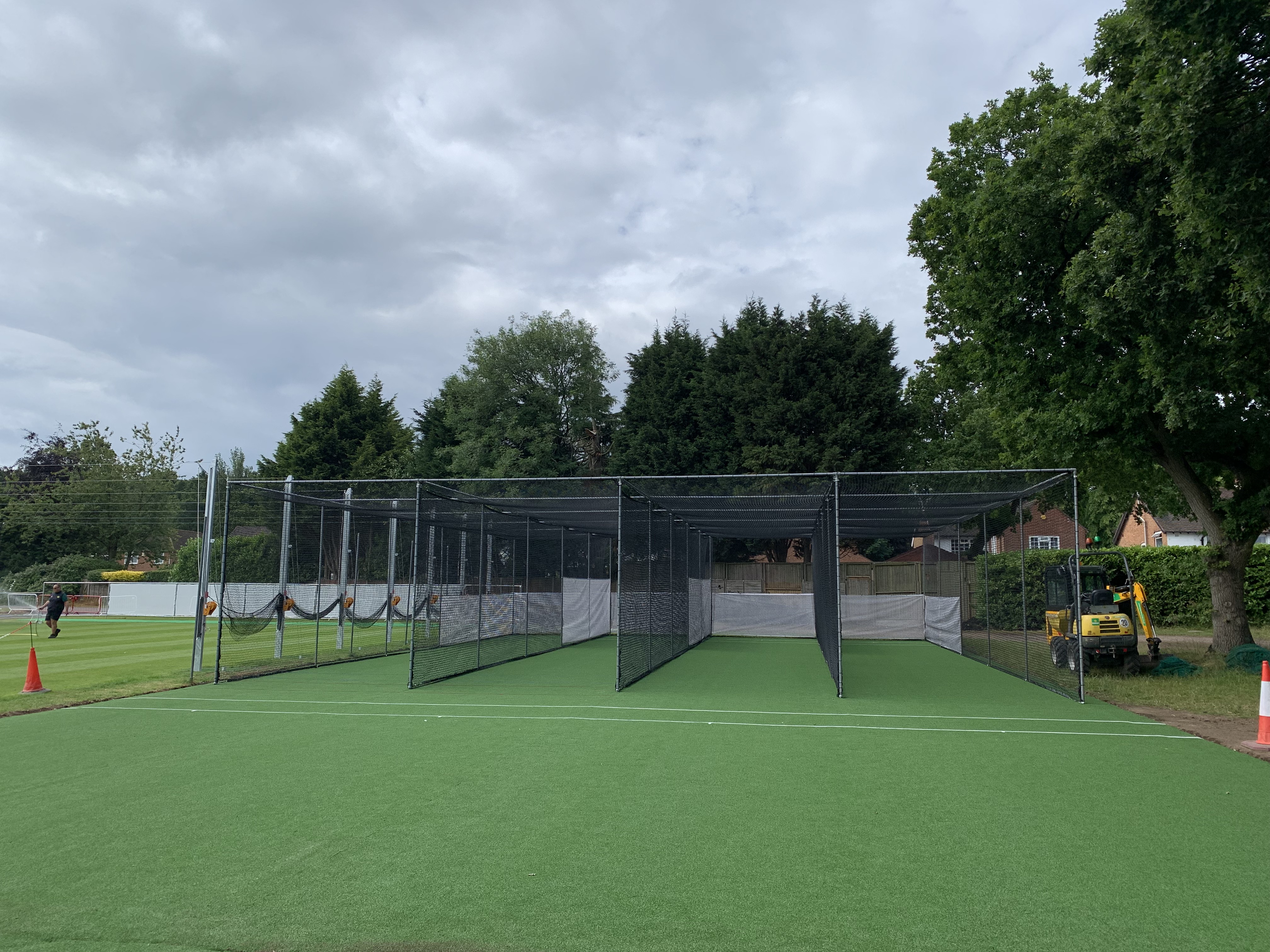Why focus on nets?
It is really important that you take the time to set up your nets safely ahead of the start of the season.
Depending on how you manage your nets they may have been subject to leaf fall, winter weed and moss growth, winter damage due to wind or flooding and unfortuantely even vandalism.
You can help to reduce damage from wind and snow load by taking down your netting during the winter - but removed netting if not stored properly can suffer from degradation, snagging and rodent damage so could need repair.
The process of reinstalling netting involves working at height and you should do this safely.
Getting Surfaces Ready
Most cricket nets have a non-turf surface - in which case you should follow the same advice as provided for non-turf pitches here.
Nets that have fine-turf grass surfaces should follow the advice as per squares and bringing these in to play. See here.
Make sure that you have checked your run-ups and made sure these are safe and level.
Mark out creases according to supplier's instructions. Note that pitch lengths vary by age group - the latest ECB recommended pitch lengths for juniors are available here.
Establishing a safe system of work
Checking your framework and reinstalling netting (or dropping them down if they have been hoisted up) will envolve work at height (where the operator is not in contact with the ground) at heights of at least 3 to 4 m above ground. This is hazardous work with serious risk of harm if carried out in an unsafe manner.
Therefore you should carry out a risk assessment and develop a safe way of working. For more guidance on how to do this see here.
Be particularly careful when operating with ladders (which should be secured) and avoid over reaching on ladders that are too short and could topple. If you are using a scaffold tower (these are available from hire companies) ensure that these are used by trained and competent people and in accordance with the suppliers instructions.
If in any doubt, call in specialist cricket net installers or contractors competent in doing this kind of work.
Reinstating your netting
First of all check the structural integrity of your framework, ensuring that all concrete footings remain solid and that all fittings are in good condition and tightened. Replace as necessary.
Then install your netting, ensuring that it is secured tightly at height with a close spacing of fittings such that the ball cannot force its way between gaps in the net. Follow your suppliers instructions on reinstalling nets.
Remember to re-install batting curtains (sometimes called blinkers) too.
Once the netting is secured at height, work your way down safely securing the net to vertical poles.
Having completed the verticals, make sure the bottoms of the nets are secured to the tension wires at the base of the net.
A variety of securing fittings are available. If you are using zip/cable ties, look for ones that are UV stable and suitable for exterior use. Select thicker with ones as these are stronger and less likely to cut through the netting. Be careful to ensure that the ends are trimmed safely so as to not to cause an injury risk.
Always secure netting with the overlocked edging where possible. Securing to the actual netting can cause it to break.
Equipment and other fittings
Make sure that any equipment used in the nets is in good safe working order.
If you have power supplies to your nets check that these are in a safe, weather and waterproof condition. If you are not sure how to do this safely - consult with an electrician.


 Tweet
Tweet